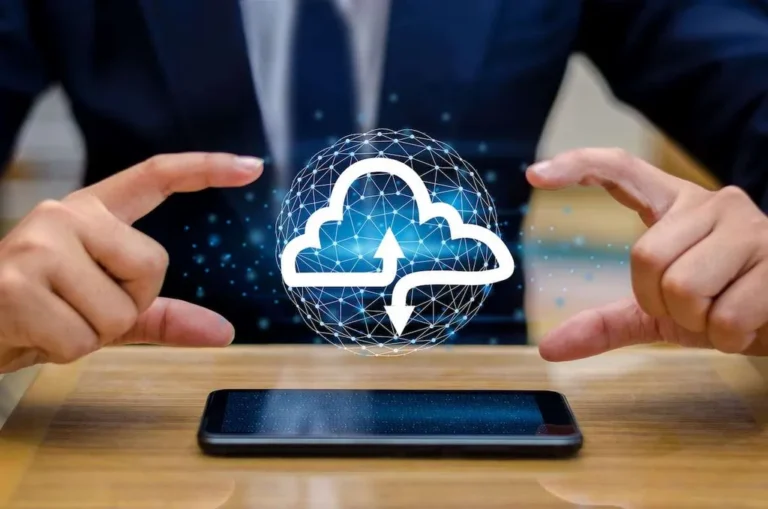Application Migration: A Complete Overview of the Best Practices

Migrating apps to the cloud enables organizations to reduce expenses, enhance scalability, and update their digital products without delays. It allows them to improve performance and upgrade their systems’ security. This approach also facilitates integrating features based on edgy technologies and switching between different environments. By adopting the method, ventures increase profitability without significant investments. In this guide, we will explore application migration strategies, analyze the steps a company should take to succeed, and discover how businesses can circumvent limitations by transferring their products from one environment to another.
What is Application Migration?
The term refers to moving apps from on-premises data centers to cloud services or alternating between different cloud environments. Building a viable strategy allows businesses to streamline and finalize this process without disrupting processes. DevOps and other teams collaborate closely to complete the task.
Cloud application migration may involve moving an app from a data center to a provider like Azure, Google, or AWS. Shifting from the public cloud to private or hybrid cloud platforms allows organizations to enhance security, achieve better efficiency, and save money when scaling up.

We are confident that we have what it takes to help you get your platform from the idea throughout design and development phases, all the way to successful deployment in a production environment!
Benefits of Application Migration
Development teams prefer to move apps to a different environment when they need to expand their functionality without making substantial investments. Below, we have outlined the main advantages of this method:
- Top-grade security: Cloud platforms have enhanced security features. They get updated regularly by a provider. It allows companies to enjoy enhanced protection without investing substantial resources in software application migration.
- Compliance: Companies from heavily regulated industries must comply with the laws. Cloud services utilize up-to-date protocols and protect client data in accordance with current requirements.
- Data backups: When storing information on-premises, a firm has to take the necessary steps to reduce downtime and eliminate the possibility of data loss. Cloud providers enable users to back up files automatically and recover them with one click.
- Scalability: Achieving sustainable growth requires organizations to expand the scope of their operations. The Software-as-a-Service (SaaS) model enables enterprises to upgrade their apps by adding extra features. It also allows them to access a large amount of storage without investing a lot of valuable resources.
- Diminished expenditure: A successful implementation of an application migration strategy results in considerable savings, as a company can spend less on maintenance.
Virtualization facilitates app management and enables enterprises to control every aspect regardless of the environment. It leads to decreased complexity and allows firms to expand outreach.

Main Stages of Application Migration
Making the process more streamlined necessitates building a team of professionals knowledgeable about network architectures and the newest technologies. Many firms recruit members from different departments to facilitate collaboration and expedite goal achievement. A team must include experts with extensive technical backgrounds to ensure smooth migration.
Before launching a process, a company must win the trust of its stakeholders and demonstrate the tangible results it can achieve by transferring an app to a different environment. Developing a viable strategy enables businesses to secure funding and expedite project completion. There are multiple stages of the migration process:
- App analysis: Legacy systems may be more challenging to transfer than modern applications. Besides, some apps require updating, especially if they were built by third-party providers. At this stage, an enterprise should identify integrations, dependencies, and specific requirements to ensure stable app functioning. Understanding a product’s architecture is a prerequisite to managing the application migration. Besides, it’s crucial to understand what security policies a company follows.
- Creating a plan: After choosing apps, it’s time to think through the steps that should be taken to complete the process. If the team assigned to the task does not have the required skills, outsourcing the project to a third-party provider may be a viable alternative. These services typically have advanced data analysis tools to facilitate monitoring.
- Testing: Before launching the process, performing a mock migration is recommended. It allows firms to identify possible issues that can hinder progress. Using a sandbox permits the developers to avoid losing valuable data. In addition, they can create detailed supporting documentation to keep stakeholders updated.
- Executing migration: A company can follow different strategies to optimize the performance of its apps. Refactoring involves changing architecture and using cloud-native tools to enhance agility. Replatforming allows businesses to achieve better optimization, while rehosting does not require making additional changes to utilize cloud tools. Containerization facilitates app migration, as apps and their dependencies are put in portable units that can function in different environments.
After finalizing the process, the team should perform follow-up tests to look for bugs. It facilitates assessing app performance and improving security.
How to Streamline Application Migration
By thoroughly preparing to transfer an app to the cloud, a firm can avoid losing data. Creating a backup and ensuring that the source and destination environments have similar settings is also crucial. Most companies utilize a deployment document with information about server settings. It facilitates reconfiguring an app to ensure it fits into a new environment.
Whether a company decides to migrate an app to a public or private cloud, it can deploy different approaches to ensure the success of the transfer. The final choice depends on a firm’s needs, budget, and other criteria. Finding the right SaaS platform makes it easier to complete the process and free up the available resources.
In some cases, an enterprise may need to utilize Platform-as-a-Service (PaaS) solutions to avoid paying for costly on-premises products. PaaS platforms enable businesses to save money by opting for a suitable subscription plan and dealing with increased demand.
When moving an app to the public cloud, an enterprise may decide to avoid making changes to save money. Such services often support cloud optimization by default, which facilitates accessing more resources when they are needed and recovering data.
Avoiding issues during app migration requires following these practices:
- Address planning issues early: Identifying main stakeholders and determining the scope of operations are necessary for seamless application migration.
- Modernize an app to upgrade its functionality: Re-architecting increases the product’s value.
- Retire processes that do not allow employees to optimize a workload;
- Use professional analysis tools to avoid bugs: Before launching the migration process, a firm should map dependencies and analyze the app and its environments.
Finalizing application migration to enhance the capabilities of a digital product requires special skills and significant investments. Companies establish partnerships with reputable service providers to expedite the process and enjoy the benefits of cloud technologies. The Global Cloud Team includes experts who know how to migrate an app and deal with any issues that may arise along the way. Contact us today to expand the scope of your operations and improve the functionality of your apps.
Top Articles
RPA as a Service: Features of Robotic Process Automation Outsourcing
I am here to help you!
Explore the possibility to hire a dedicated R&D team that helps your company to scale product development.






